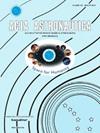太阳高能粒子事件的 "万无一失 "问题处理及后续决策
IF 3.1
2区 物理与天体物理
Q1 ENGINEERING, AEROSPACE
引用次数: 0
摘要
我们讨论了在太阳高能粒子(SEP)事件预测中相对被忽视的 "一切正常 "问题。这些质子和重离子事件在太阳大爆发时注入,以相对论速度定向传播到日光层,威胁低地轨道及更远处的设备和人员。SEP 是与太阳耀斑和日冕物质抛射(CMEs)相关的罕见至极端事件,每数百次耀斑和 CMEs 的远程观测中就有一次 SEP 事件被现场探测到。对于快速(即冲击面)和日晕(即主要沿日地线传播)CMEs,这种糟糕的总体关联度会急剧降低到 1:2 以下。所有的 "清除 "都意味着要对预设预测窗口内的可容忍条件进行评估。依靠最全面的 SEP 事件数据集之一,我们实施了一种方法,为 NOAA 严重度 S1 及以上(S1+)的事件提供 "全部清除",并确定了可能从太阳中的源位置引发此类 SEP 事件的最小爆发属性(耀斑大小和 CME 速度)。结果对应并反映了最小复杂度的设置,在向地太阳半球的不同纵向区域产生了不同的属性。这项工作证明了这一概念;对于要求更高的 "All Clear "定义,可以随意增加复杂度,但由于该现象的稀缺性,只需要足够的统计数据。在这一点上,我们希望利益相关者提供反馈意见,说明什么符合他们对 "全清楚 "的定义(我们希望不同的运营商有不同的定义),以便确定运行这项工作和类似工作的精确设置。本文章由计算机程序翻译,如有差异,请以英文原文为准。
A treatment of the all-clear problem for solar energetic particle events and subsequent decision making
We discuss the relatively overlooked problem of All Clear in Solar Energetic Particle (SEP) event prediction. These proton and heavier ion events are injected in major solar eruptions, propagate directionally into the heliosphere at relativistic speeds and threaten equipment and personnel at low-Earth orbit and beyond. SEPs are rare to extreme events associated with solar flares and coronal mass ejections (CMEs), with one SEP event detected in-situ every several hundreds of flares and CMEs observed remotely. This abysmal overall association improves drastically to below 1:2 for fast (i.e., shock-fronted) and halo (i.e., propagating mainly along the Sun–Earth line) CMEs. All Clear implies an assessment of tolerable conditions within a preset prediction window. Relying on one of the most comprehensive data sets for SEP events, we implement a methodology that provides an All Clear for events of NOAA severity S1 and above (S1+) and identify the minimal eruption attributes (flare size and CME speed) that could give rise to such SEP events from source locations in the Sun. The results correspond to and reflect settings of minimum complexity, giving rise to different attributes for different longitudinal zones in the earthward solar hemisphere. This work presents proof of concept; complexity can be increased at will for more demanding All Clear definitions, subject only to sufficient statistics due to the scarcity of the phenomenon. At this point, feedback is desired from stakeholders on what fits their definition of All Clear (we expect different definitions from different operators), so that to define the precise settings on which to run this and similar exercises.
求助全文
通过发布文献求助,成功后即可免费获取论文全文。
去求助
来源期刊

Acta Astronautica
工程技术-工程:宇航
CiteScore
7.20
自引率
22.90%
发文量
599
审稿时长
53 days
期刊介绍:
Acta Astronautica is sponsored by the International Academy of Astronautics. Content is based on original contributions in all fields of basic, engineering, life and social space sciences and of space technology related to:
The peaceful scientific exploration of space,
Its exploitation for human welfare and progress,
Conception, design, development and operation of space-borne and Earth-based systems,
In addition to regular issues, the journal publishes selected proceedings of the annual International Astronautical Congress (IAC), transactions of the IAA and special issues on topics of current interest, such as microgravity, space station technology, geostationary orbits, and space economics. Other subject areas include satellite technology, space transportation and communications, space energy, power and propulsion, astrodynamics, extraterrestrial intelligence and Earth observations.
 求助内容:
求助内容: 应助结果提醒方式:
应助结果提醒方式:


